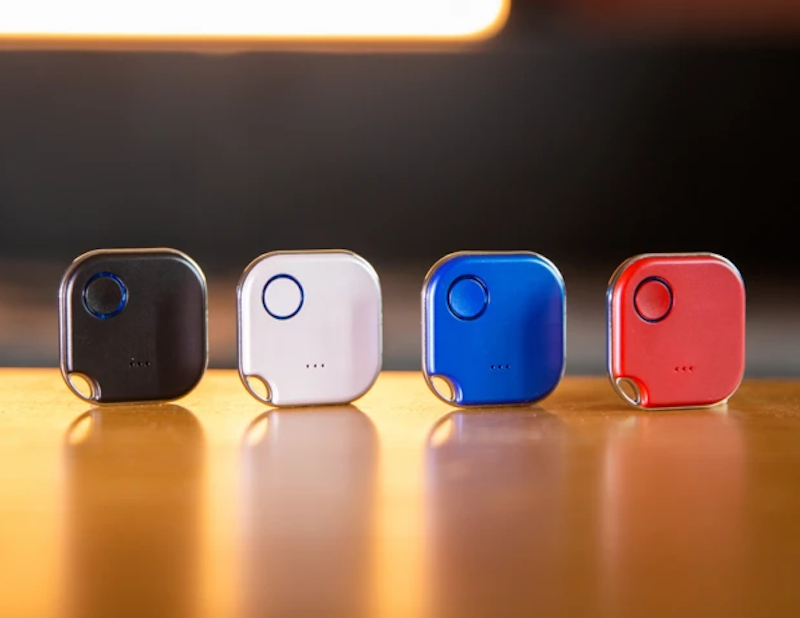I’ve written before about the smart products that Shelly makes and how they can be used in a smart home. For those that aren’t familiar with Shelly, they manufacture a wide range of IoT devices that solve a wealth of problems in a smart home.
Shelly offers a variety of smart relays for turning devices on/off. The relays include the ability to sense a contact closure input and optionally operate the relay based on it. Some of their relays also include power monitoring. They also offer modules for dimming standard lights and controlling RGBW light strips, as well as smart power monitors; smart light bulbs; and smart sensors for motion, temperature, humidity, water (flood), door/window open/close, natural gas, and LP gas.
Shelly smart home products are manufactured by Shelly Group (recently rebranded from Allterco Robotics), whose headquarters is in Sofia, Bulgaria. Shelly Group has more than 20 years of experience in mobile value-added products and services. It has expanded beyond its roots in the telecommunications industry and now focuses on the development and distribution of IoT products and solutions.
The company introduced its Shelly line of smart home IoT products in 2018. Their products are sold in 120 countries around the world and they opened an office in the U.S in 2020. The complete Shelly line of smart home products available in the U.S. can be found on their website here.
I have found Shelly devices to be unique problem solvers in smart home systems. For example, Shelly’s Wi-Fi smart relays make it easy to detect a button press and control a piece of equipment through contact closure or power control almost anywhere in a home. Their Plus and Pro lines of products include the ability to customize the operation of the product through scripting. Finally, the Pro line of products are DIN rail mountable and include a wired Ethernet port.
Shelly’s products integrate with a wide range of smart home platforms, such as Amazon Alexa, Google Assistant, SmartThings, Home Assistant, HomeSeer, Homey, Hubitat, iBroker, SYMCON, openHAB, Control4 (using the driver developed by Chowmain Software), Crestron (using the driver I’ve written that is hosted on my GitHub here; this driver has been updated to support many of the new products presented in this article.)
Shelly’s products have historically communicated over Wi-Fi, but with the company’s new products it has now expanded with Bluetooth and Z-Wave offerings.
The ShellyBLU Button1 is a battery-operated button. It is available in multiple colors and supports single-press, double-press, triple-press, and long-press events. Battery life is up to two years, and the Bluetooth radio has a range of up to 33 feet indoors and 100 feet outdoors, depending on conditions.
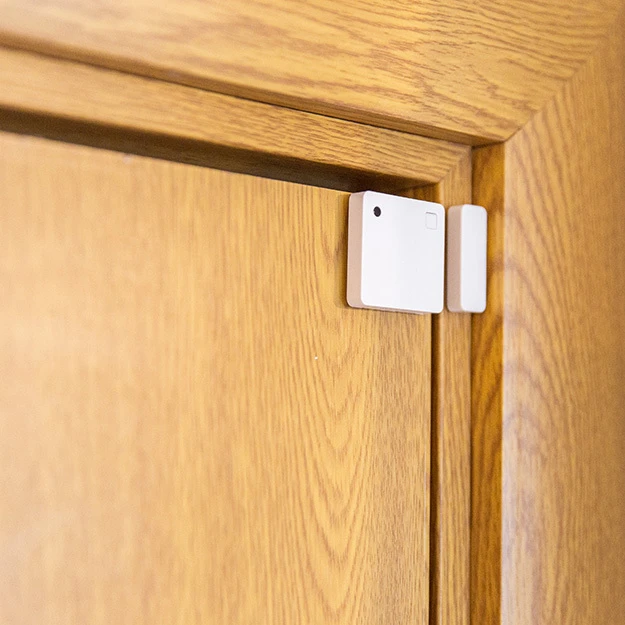
The new ShellyBLU Door / Window Sensor can detect the opening and closing of a door or window. In addition, it can detect the angle of inclination of a door or window that tilts and turns. Finally, it includes a light sensor. Battery life is up to 5 years and the Bluetooth radio has a range of up to 33 feet indoors and 100 feet outdoors; depending on conditions.
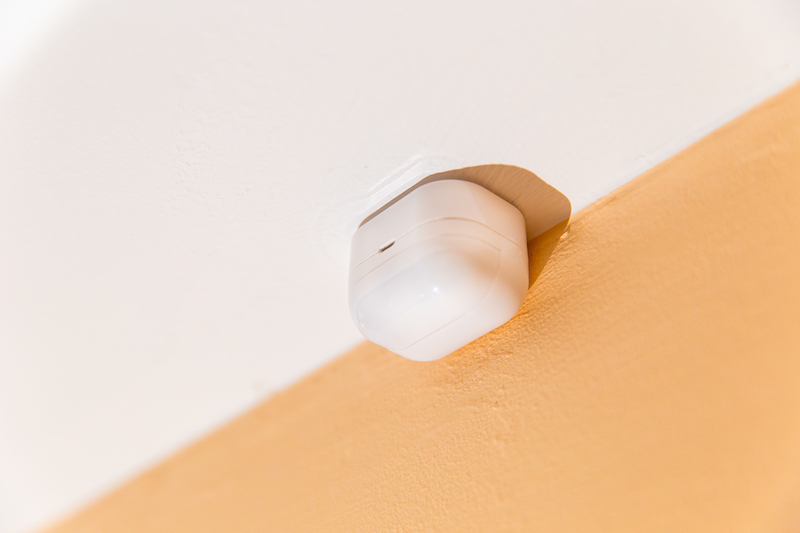
The new ShellyBLU Motion sensor is a battery operated, Bluetooth motion sensor. It has a 120-degree field of view and a range of approximately 80 feet (25 meters). It also includes a light sensor. Battery life is estimated to be five years.
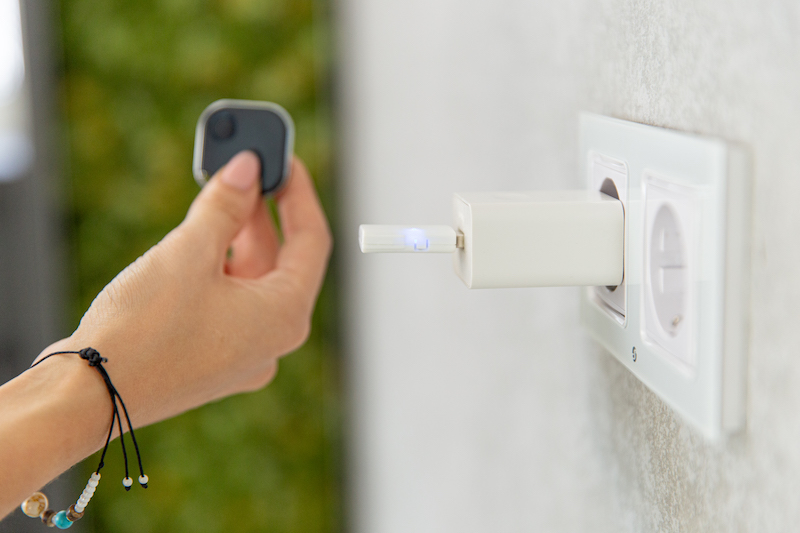
The Shelly Bluetooth Gateway links Shelly Bluetooth devices to Wi-Fi, so they can be controlled through JavaScript, Rest API, and MGTT/S. It is USB powered and has an approximate range of 80 feet (25 meters).
The ShellyBLU Button 1, Door / Window Sensor, and Motion sensor are designed to either connect directly to a hub that supports the BTHome protocol, to the Shelly Bluetooth Gateway, or they can be linked to any Shelly Plus device.
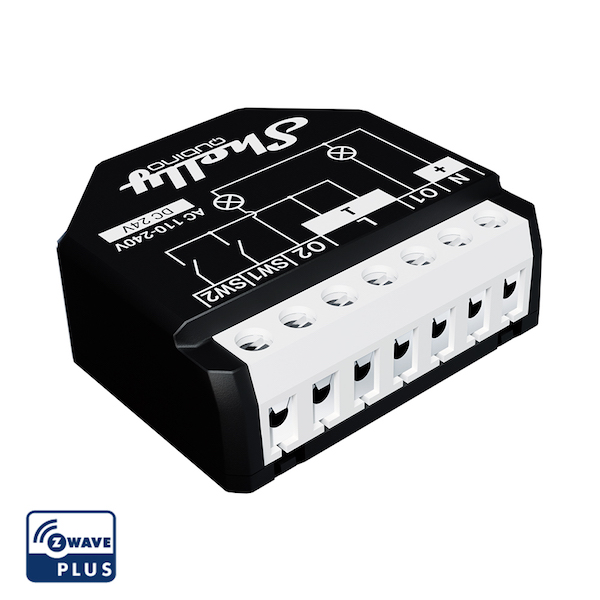
The Shelly Qubino Wave 1, Wave 1PM, and Wave 2PM are Z-Wave equivalent devices to the Shelly 1, Shelly 1PM, and Shelly 2PM. The Wave 1 includes a single relay and a contact closure input. The Wave 1PM can control the power to one device as well as measure the device’s power consumption. The Wave 2PM can control the power to two devices as well as measure their power consumption. Both the Wave 1PM and 2PM have a single contact closure input.
These devices are designed to connect to a Z-Wave Hub and don’t support the scripting capabilities of the Shelly Plus line products. In addition, unlike the Shelly 1, Shelly 1PM and Shelly 2PM, the contact closure input can either only toggle the connected device on/off when the input changes state or turn the connected device on/off on the rising edge of a button connected to the input. There is no ability to disassociate the contact closure input from control of the output so it could be independently used for another function in the smart home.
The new Shelly Plus 0-10 V Dimmer is a Plus device that is capable of driving/dimming a 0-10V lighting fixture. It includes two switch inputs that can trigger the operation of the attached lighting fixture. In addition, it includes sunrise/sunset emulation
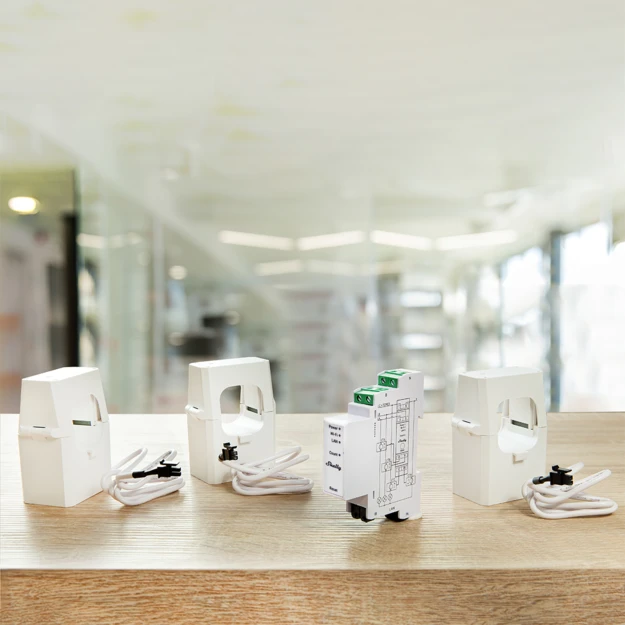
Shelly has released an enhanced version of its Pro 3EM, DIN rail mountable, three-phase energy meter designed for commercial applications. The new Shelly PRO3 EM-400 can measure the power (using current transformers) of resistive, capacitive, and inductive loads up to 400 amps.
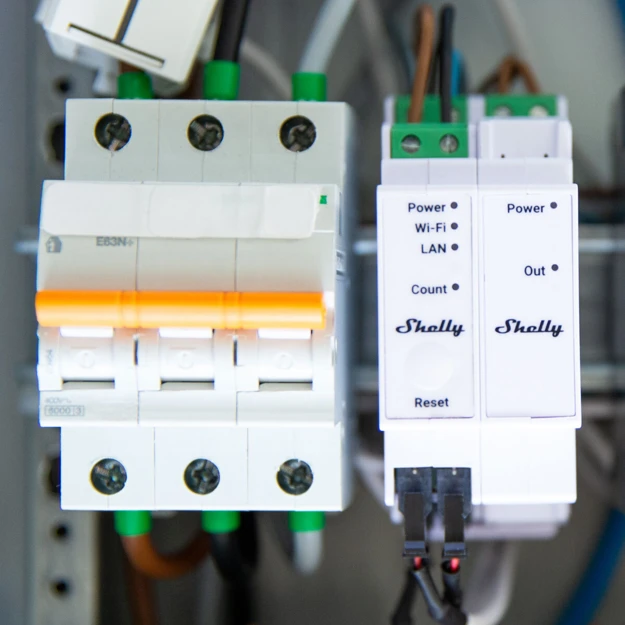
The new Shelly Pro 3EM Switch Add-On is a switch that extends the functionality of the Shelly Pro 3EM series of devices. It provides for control of a contactor that, in turn, controls high current devices. For example, if a Pro 3EM is used to monitor the energy used in a home, the Switch Add-on can be leveraged to automatically turn off non-essential appliances to save energy when needed.

The new Shelly Pro EM-50 is a DIN rail mountable energy monitor capable of monitoring the power of two single-phase electrical devices using the included 50A current transformers. It also includes a single 5A relay.
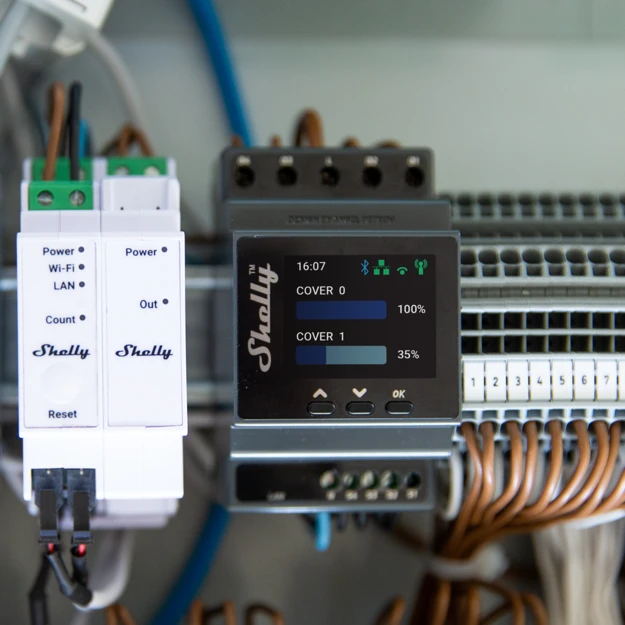
The Shelly Pro Dual Cover/Shutter PM can control two, AC powered, motorized garage doors, window blinds, skylights, and other similar devices. Like other Shelly Pro devices, it is DIN rail mountable and includes an Ethernet port for connectivity (Wi-Fi is also supported). It can be operated remotely or using the device’s built-in display and the buttons on the case.

While Shelly’s relays and power monitoring relays always have been very small devices capable of being installed inside existing electrical boxes, even a device as small as two Oreo cookies can sometimes be too big. Shelly has introduced an even smaller line of relays and a standalone power monitor.
The new Shelly Plus 1 Mini provides the same basic functionality as the Shelly Plus 1. It includes a single dry contact relay and is only approximately, 1.1” x 1.3” x .63”
The new Shelly Plus 1 PM Mini provides the same basic functionality as the Shelly Plus 1PM. It can switch an 8A load and measure the power being consumed by the load. It is in the same small sized package as the Shelly Plus 1 Mini.
The Shelly Plus PM offers only the ability to monitor the power being consumed by an attached device. There is no ability to control it.
While many other new Shelly devices can be viewed as additions to their line of existing products, the new Shelly Wall Display is a major step for Shelly. It is a 4”, wall-mounted, touch panel that offers lighting control, an integrated 5A switch, embedded sensors for temperature, humidity, and lighting level, power monitoring, the ability to control other Shelly devices in a home, and (in the near future) the ability to control heating/cooling settings in a home.
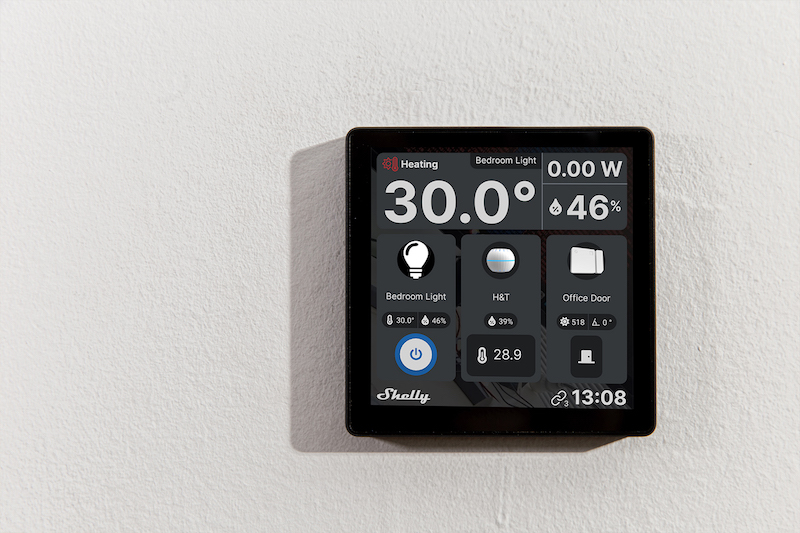
New Services
Shelly has begun offering a new Smart Control Premium paid tier to their Shelly app. This new tier hasn’t diminished the functionality of the app but simply adds new features that are only available under a subscription model. These new features include:
Extended Event Logs – An expansion of event log entries per device from five entries to 100 entries.
Extended Data Visualization – An expansion of the ability to view energy data from devices from one-hour intervals to one-minute intervals
Extended Number of Alexa Virtual Actions – An expansion from up to three virtual actions to 100 Alexa virtual actions. Virtual actions can, for example, trigger an Alexa routine to execute based on an event being sensed by a Shelly device.
Additional Dashboards – An expansion from being able to create up to five dashboards in the app to up to 20 dashboards. (A dashboard is a collection of related smart home devices that it is convenient, for the user, to group together).
Additional Widgets per Dashboard – An expansion from being able to include up to 40 widgets per dashboard to up to 80 widgets per dashboard.
New Weather Widget – A new weather widget has been added to the premium tier that allows weather information to be included in the app to, for example, allow scenes to be triggered based on weather forecasts
Forgotten Lights Reminder – Provides reminders via push notifications or email when lights are left on in a home
Device Failure Detection – Provides notifications based on abnormal energy consumption by appliances connected to Shelly devices that include energy monitoring
Monthly Energy Reports – Provides monthly reports of energy consumption patterns of appliances connected to Shelly devices that include energy monitoring.
The current price of the premium tier is $3.99 per month or $36.99 per year after a free 3-month trial period.
Matter Protocol Support
In a recent presentation, Dimitar Dimitrov, CEO of the Shelly Group, announced that Shelly would be rolling out Matter Protocol support for the current products via a special firmware update at the end of the year. Future products would use a new chipset that would have Matter Protocol support “baked in”.
Summary
As a company, Shelly is not standing still. They are aggressively moving to offer new products and services that build upon their existing products and are expanding into Bluetooth and Z-Wave offerings. Their products continue to be a way to solve unique problems in a smart home including control of homeowner appliances and devices that don’t include smart capabilities, the monitoring events and the environment in a smart home, and the capturing of homeowner input.



